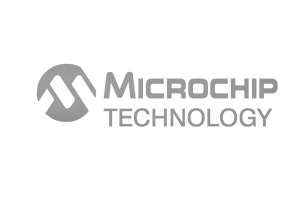ATSAMR21G18A-MFT Overview
The ATSAMR21G18A-MFT is a highly integrated microcontroller designed for low-power wireless applications. Built around an Arm? Cortex?-M0+ core running at up to 48 MHz, it combines advanced processing capabilities with an integrated 2.4 GHz IEEE 802.15.4-compliant radio transceiver. This device supports robust connectivity for Zigbee, Thread, and proprietary wireless protocols, making it ideal for industrial, consumer, and IoT applications. Featuring extensive peripherals and flexible power management, the product enables efficient system design and prolonged battery life. For more technical details, visit the ICメーカー.
ATSAMR21G18A-MFT Technical Specifications
| パラメータ | 仕様 |
|---|---|
| コア | Arm? Cortex?-M0+ 32-bit |
| 最大周波数 | 48 MHz |
| フラッシュメモリー | 256 KB |
| SRAM | 32 KB |
| 動作電圧 | 1.8 V to 3.6 V |
| Wireless Protocol | IEEE 802.15.4 at 2.4 GHz |
| パッケージタイプ | 64-pin QFN (7×7 mm) |
| Power Consumption (RX) | Approximately 14.5 mA |
| Power Consumption (TX at 0 dBm) | Approximately 16.5 mA |
| 動作温度 | -40度~85度 |
ATSAMR21G18A-MFT Key Features
- Integrated 2.4 GHz IEEE 802.15.4 Radio: Supports Zigbee, Thread, and other protocols, enabling seamless wireless connectivity with minimal external components.
- 低消費電力: Efficient power management reduces battery drain, extending device operational lifetime in portable and IoT applications.
- Arm Cortex-M0+ Core: Provides sufficient processing power at up to 48 MHz for real-time control and signal processing tasks.
- Flexible Memory Architecture: 256 KB of Flash and 32 KB SRAM support complex firmware and data buffering without external memory.
- Comprehensive Peripheral Set: Includes USART, SPI, I2C, ADC, and timers, facilitating diverse sensor interfacing and communication needs.
- Robust Operating Voltage Range: Operates between 1.8 V and 3.6 V, allowing compatibility with various power sources and system designs.
- Compact 64-pin QFN Package: Enables high-density PCB layouts and improved thermal performance for industrial-grade applications.
ATSAMR21G18A-MFT Advantages vs Typical Alternatives
This device offers integrated wireless capabilities combined with a low-power Arm Cortex-M0+ core, providing superior energy efficiency and system integration compared to standalone microcontrollers paired with external radios. Its rich peripheral set and flexible voltage range simplify design complexity and enhance reliability, making it an attractive choice for wireless sensor networks and IoT devices requiring compact, robust solutions.
ベストセラー商品
代表的なアプリケーション
- Wireless sensor networks in industrial automation, enabling reliable data collection and control with low power consumption for extended operational periods.
- Smart home devices such as lighting controls and security sensors requiring seamless Zigbee or Thread connectivity.
- Battery-powered IoT endpoints that benefit from efficient power management and compact form factors.
- Remote monitoring systems where integrated radio and microcontroller reduce overall system size and cost.
ATSAMR21G18A-MFT Brand Info
This microcontroller is part of a well-established family of wireless-enabled devices recognized for combining advanced embedded processing with integrated radio frequency transceivers. The product supports a wide ecosystem of development tools and software stacks, facilitating rapid prototyping and deployment in connected applications. Its design prioritizes low power, high integration, and flexible peripheral options, reinforcing its position in industrial and consumer wireless markets.
よくあるご質問
What wireless protocols does this microcontroller support?
The device includes an integrated 2.4 GHz IEEE 802.15.4-compliant transceiver, supporting Zigbee, Thread, and proprietary wireless protocols. This flexibility allows developers to implement a variety of wireless communication standards suitable for mesh networks and IoT connectivity.
注目商品
What is the operating voltage range, and why is it important?
The microcontroller operates between 1.8 V and 3.6 V, allowing it to work seamlessly with different power sources such as single-cell lithium batteries or regulated supplies. This wide voltage range increases design flexibility and helps optimize power consumption in battery-operated applications.
How much memory does this device have for application code and data?
It features 256 KB of Flash memory for program storage and 32 KB of SRAM for data and stack. This memory configuration supports complex firmware implementations and runtime data buffering without requiring external memory components.
お問い合わせ
What are the power consumption characteristics during radio operation?
In receive mode, current consumption is approximately 14.5 mA, while transmission at 0 dBm output power draws around 16.5 mA. These figures support efficient wireless communication suitable for battery-powered applications requiring prolonged uptime.
Which package type is available for this microcontroller, and how does it affect integration?
The device comes in a 64-pin QFN package measuring 7×7 mm. This compact footprint facilitates high-density PCB layouts and improves thermal dissipation, which is critical for industrial and embedded applications where space and reliability are key considerations.











